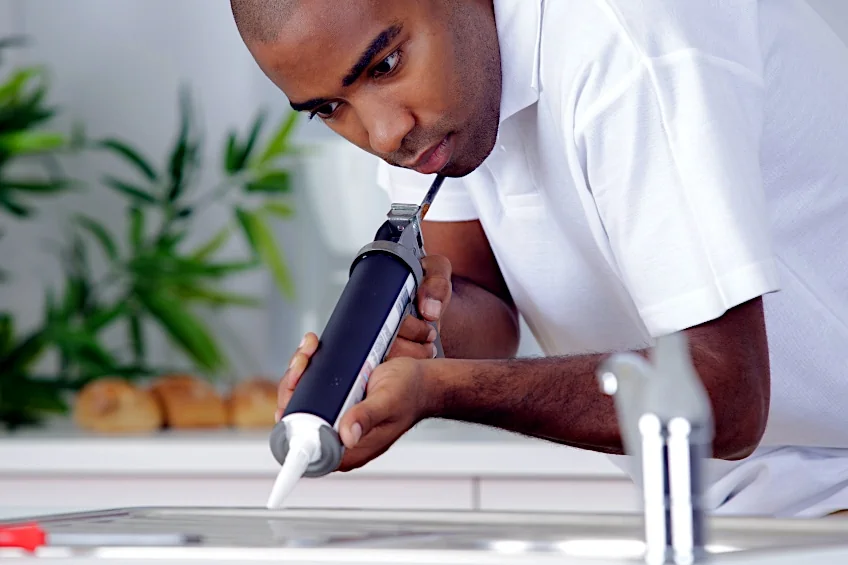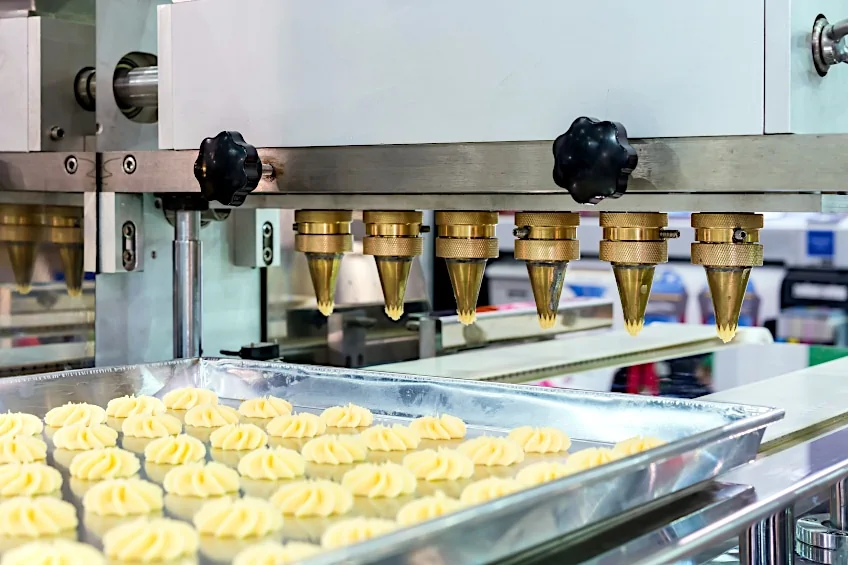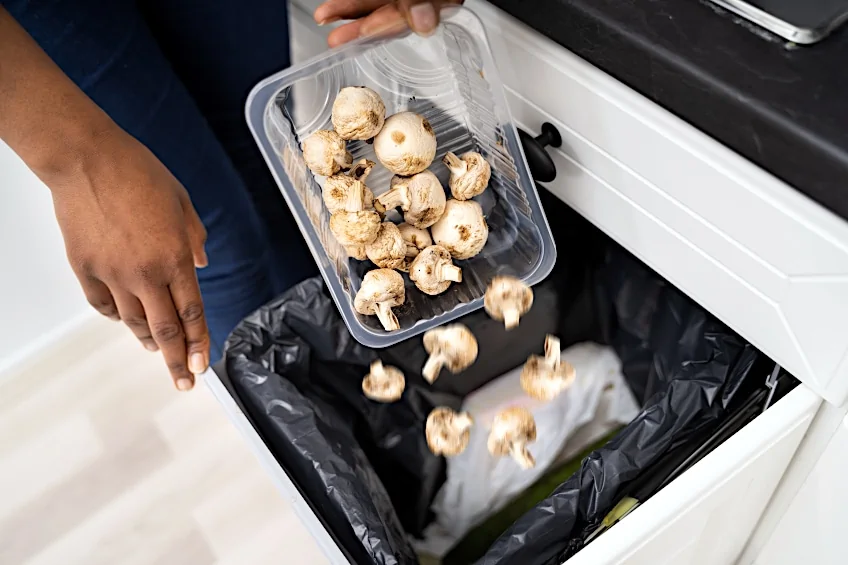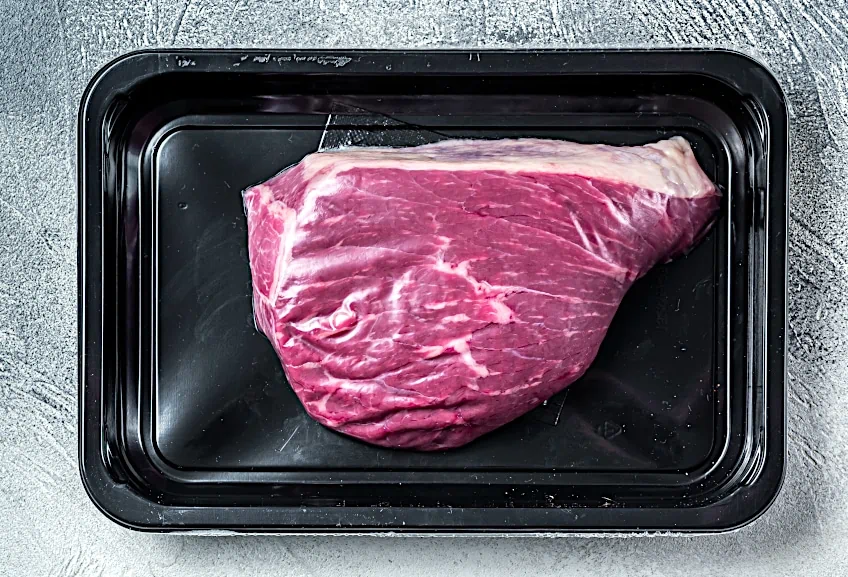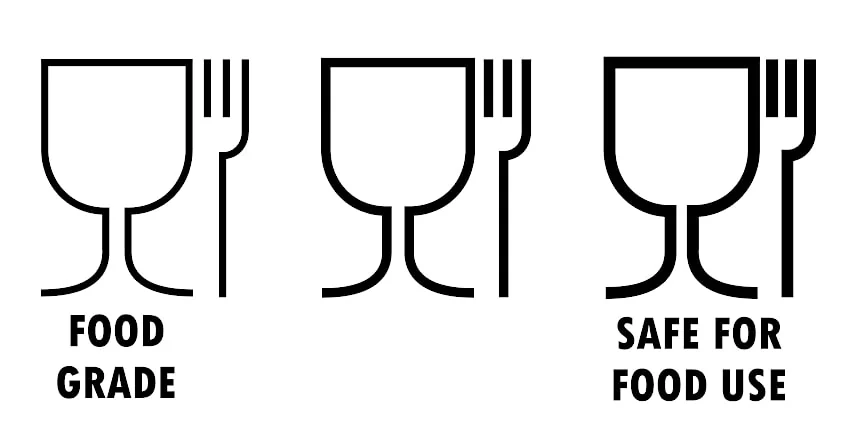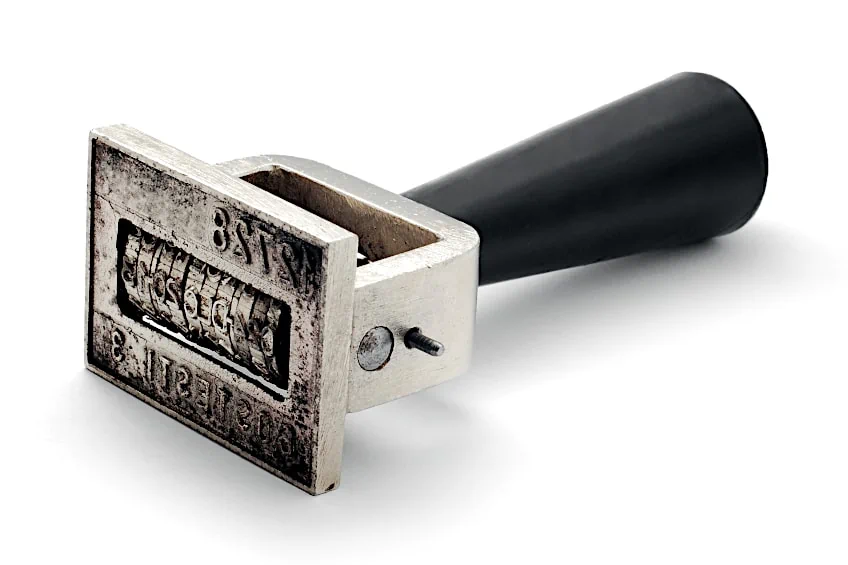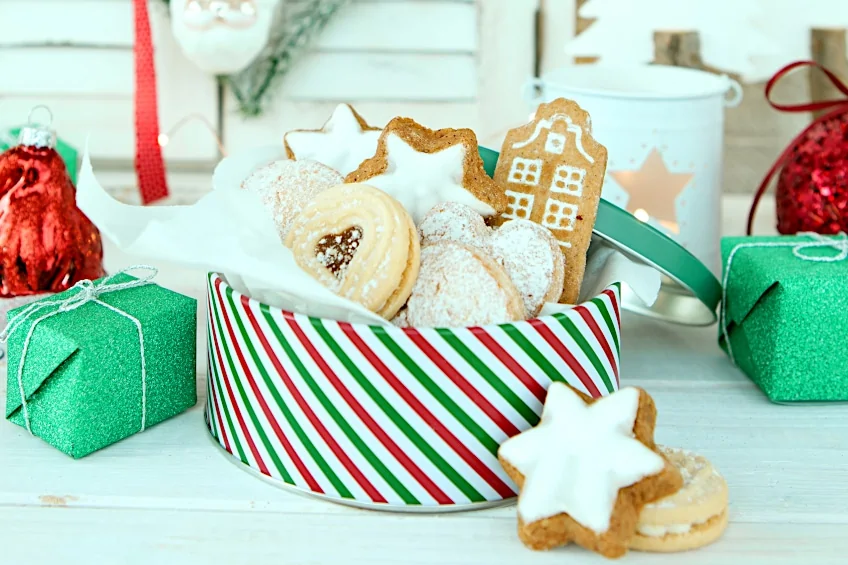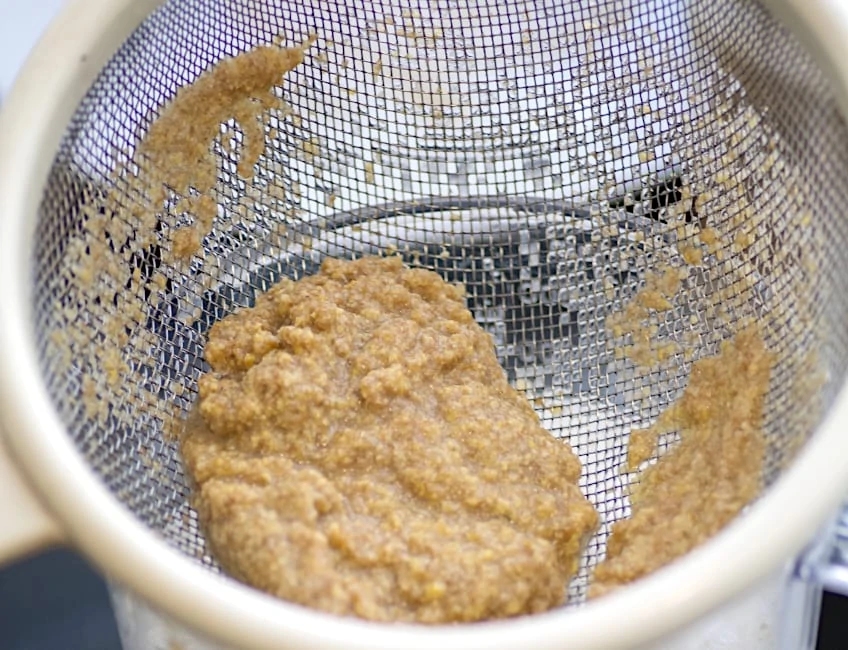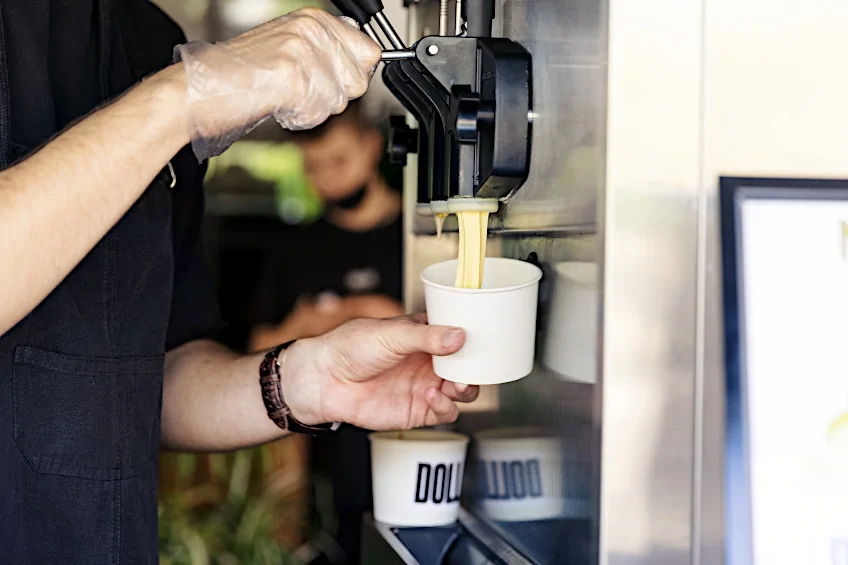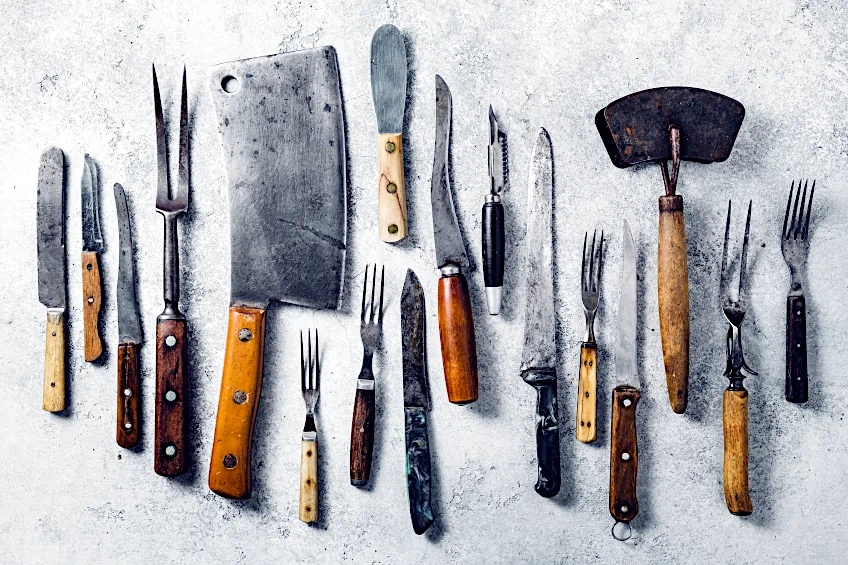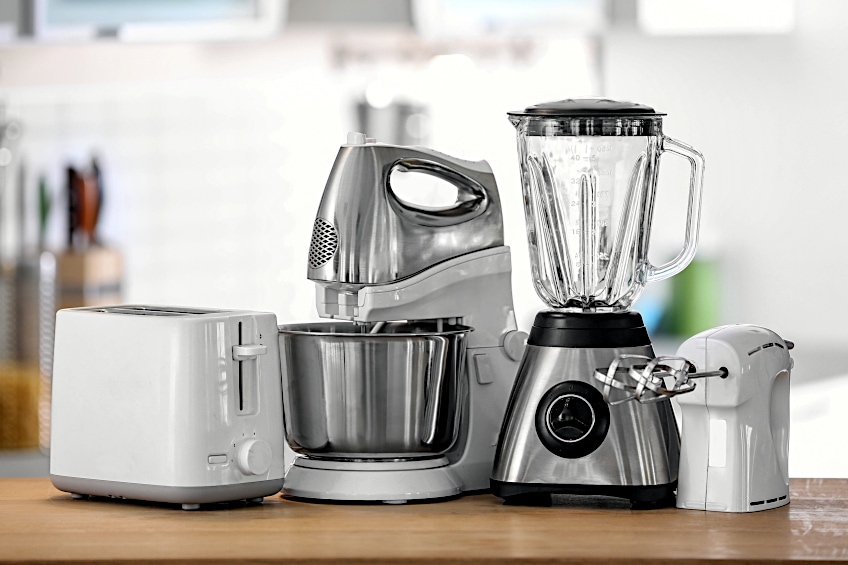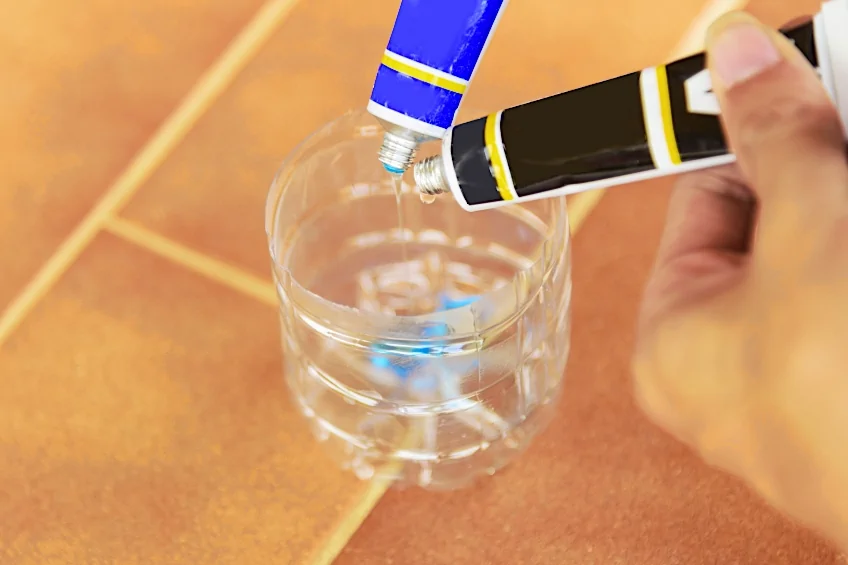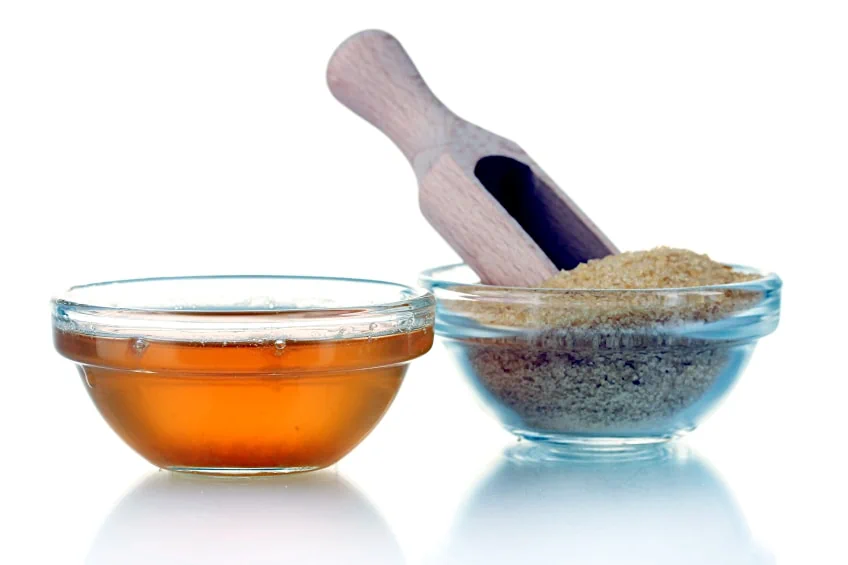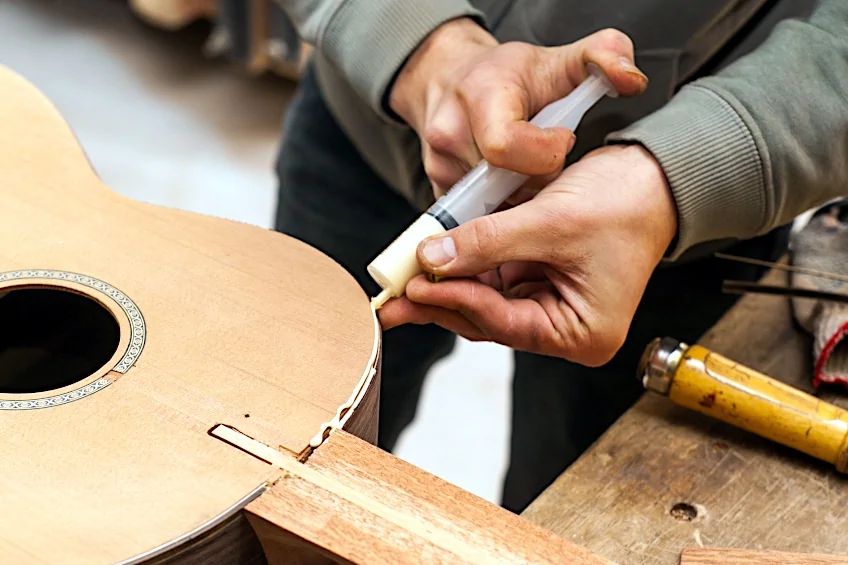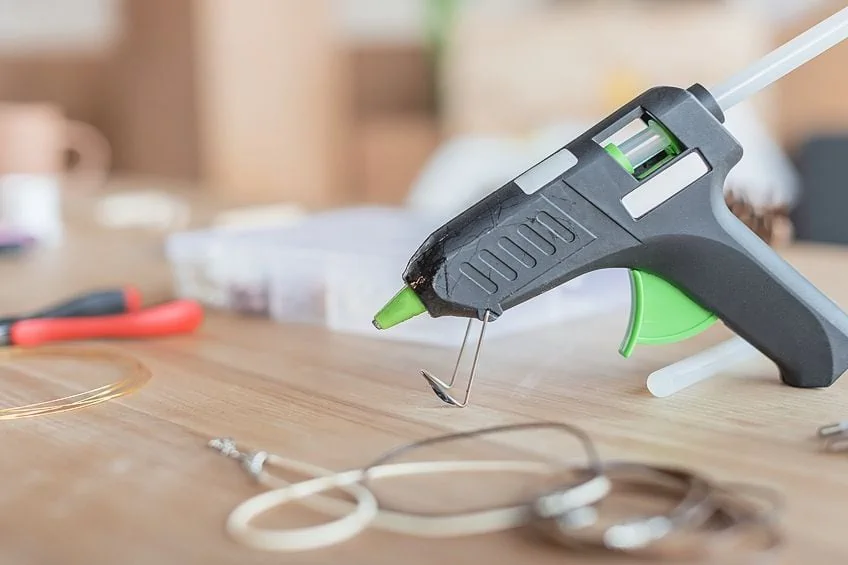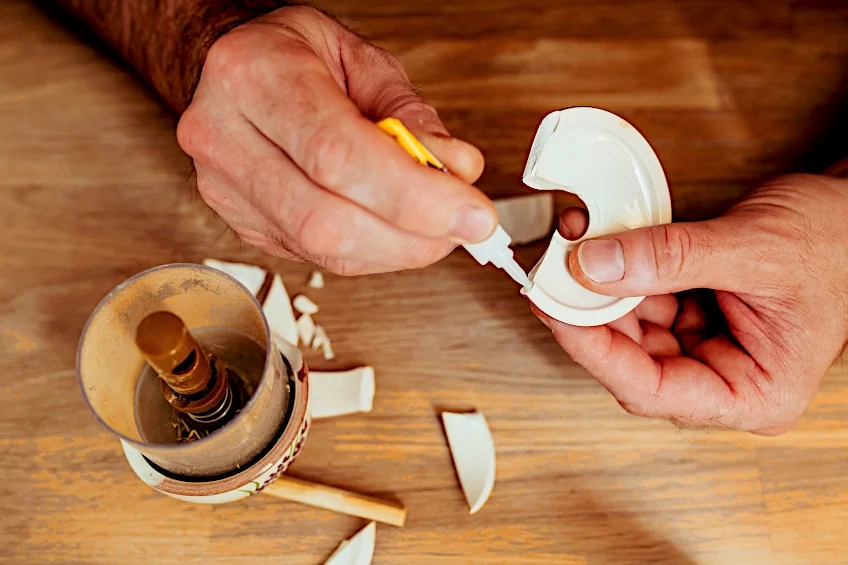Best Food-Safe Glue – Non-Toxic Adhesives for Food Contact
This post may contain affiliate links. We may earn a small commission from purchases made through them, at no additional cost to you. You help to support resin-expert.com
Glue makes your life and the lives of those around you so much easier. The best thing about it is that you don’t even know it’s there, but it’s always working to literally keep your world together. The circuit board inside your smartphone? Held together with silicone glue. That awesome pair of shoes that you got on sale? They’re held together by glue. Even that juicy steak that makes you mouth water just by looking at it is held together by glue! That’s right, even some of the food that you enjoy is held together by a food-safe adhesive, but this isn’t the only instance in everyday life where adhesives and foodstuff interact with one another. This being said, let’s have a look at what food-safe glue is, how it works, and what some of the best food-safe glue products on the market are.
Table of Contents
What Is the Definition of Food-Safe Glue?
It pretty much goes without saying that most of us understand what a food-safe glue is, after all, we wouldn’t want a glue to come in contact with our food or things that come into direct contact with our food and make us sick. This being said, there is a more technically accurate definition of food-safe glue as described by the Food and Drug Administration (FDA). What is this description you ask?
Legally, a food-safe glue is described as a food contact substance intended for use as a component of material used in the manufacturing, packing, transporting, or holding of foodstuff, if such use is not intended to have a technical impact on such food. Now, that is a mouthful, and although it might be a bit reductive, this basically means that if a glue affects the food in any way other than intended, it is not considered food safe.
So, while you could use any adhesive on food, this doesn’t mean that you should. Certain adhesives have the potential to contaminate the food they’re used on, which can lead to rot, poisoning, and generally making the food unfit for human consumption. We say human consumption because we’re usually the ones that eat food that has glue attached to it, but this doesn’t mean you should feed contaminated food to animals either.
This doesn’t just apply to adhesives used in meat processing plants either. Any adhesive that will come into direct contact with food needs to follow the formula set out by the FDA in their regulations of materials act section 175.300. This means that any packaging that uses glue, whether it be an in-store container, refrigeration unit, or temporary storage device, must only use adhesives synthesized using the above-mentioned guidelines or the food contained inside them will legally be considered unsafe for human consumption.
That’s a lot to take in, right? Well, it’s even trickier to implement considering that everyone is concerned about their bottom line, which is why most manufacturers and distributors of foodstuff tend to use food-safe containers to transport their products to avoid adhesive contact. This being said there are loads of food-safe adhesive products on the market for you to choose from.
What Are the Standards and Labels for Food-Safe Glue?
According to the FDA, any adhesive that comes in contact with food is classified as a food contact substance or FCS. These substances have to follow a particular set of regulations, which means that during the manufacturing of these adhesives, only certain ingredients can be used. Any deviation from this process means that the product cannot be labeled as a food-safe adhesive, which leaves the manufacturer in question liable for any harm caused by said products.
What are the labeling requirements for adhesives that are graded as food-safe though? Well, there are a few criteria that need to be met, this includes the label’s face stock, the internal barcodes associated with the product, the ink used in the display of the nutritional information, as well as the dates and lot codes. All of these elements need to be presented in a manner that aligns with the FDA’s standards in order for any adhesive to be considered food safe.
The FDA goes even further by differentiating between direct and indirect contact substances. This is because, besides adhesives, things like ink can, directly and indirectly, come into contact with foodstuffs, and there are stringent regulations for substances in both categories. Things like labels and plastics are considered indirect contact substances, whereas things like the ink used to indicate the date of expiry on fruit would be considered a direct contact substance.
As you can imagine, this can be a lot of legwork for any company, and worse so, can leave smaller companies a bit confused thanks to the notoriously ambiguous wording set out in FDA guidelines. This leaves loads of room open for consumers to be deceived, as someone could follow their own interpretation of these guidelines, stick an FDA-approved sticker on their product, and sell it without anyone being the wiser.
You should also note that the FDA does not approve or endorse any products. This means that anything with a fancy FDA-approved sticker could potentially be about as safe to consume as the plastic wrapping it comes in. Weird, right? In the FDA’s defense, it is the responsibility of the manufacturers to ensure that the appropriate materials and processes are used in the manufacturing of their goods.
What Are Food Safe Adhesives Used For?
While in the crafting industry food-safe adhesives are used to adhere surfaces and/or objects that will be used in contact with foodstuff, their applications can go far beyond this rudimentary usage. They are actually common in tons of industrial and food manufacturing environments to ensure that things processed there aren’t contaminated by the surrounding machinery.
A good example is how food-safe adhesives are used to bond mesh gauze on filters. These filters can be used to process a variety of liquid substances often in an attempt to purify them for consumption or packaging. These adhesives help to secure these filters not only by preventing them from shifting but by ensuring that the liquids being processed do not into contact with conventional adhesive products.
Another common application for food-safe adhesives is on machines that dispense food for immediate consumption. One of these machines that you’ve likely come across in your daily life is an ice-cream dispenser, which uses food-safe adhesives to create a seal around the internal dispenser recess in the interest of avoiding contamination by milk or ice that may have gotten stuck in these little nooks.
Let’s have a look at how these adhesives might be used inside your home for a minute. Did you know that even your kitchen knives make use of food-safe adhesives? That’s right, and while you might be thinking that the blades are made of stainless steel, so they don’t need to be food-safe, the handles of your knives are not. The handles are typically sealed with a food-safe adhesive to prevent food particles from becoming stuck between the hilt and the plastic/wooden cover of the handle.
Even the machines used to package your food have to make use of food-safe adhesives either as a bonding mechanism or as a protective layer. That’s right, some of these adhesives as so strong and durable that you can coat a tool in them in order to make it conducive to working with foodstuffs. This does require that the function of the object not be impeded though, that’s why stainless steel is used for kitchen knives and not normal steel covered in food-safe glue.
Which Glues Are Considered Food Safe?
If you’ve ever been to a craft or hardware store, then you know that there are loads of glue products on the market. However, you should know that there are only a few types of adhesives that are food safe once they have had a chance to cure completely. So, rather than you having to search through an insufferable number of websites to find out which glues are food safe, we thought we’d list them right here for your convenience.
| Type Of Adhesive | Is It Food Safe Once Cured? |
| Two-part epoxy glues | ✔ |
| Silicone Glues | ✔ |
| PVA Glues | ✘ |
| Polyacrylate Glues | ✘ |
| Polyurethane Glues | ✔ |
| Hot Melt Glues | ✔ |
| Hide Glues | ✔ |
| Conventional Superglues | ✘ |
Two-Part Epoxy Glues
These days two-part epoxy resin glues are some of the most popular heavy-duty adhesives on the market. It also happens to be one of the strongest food-grade glue products on the face of the planet, with pretty much no exceptions aside from customer-made adhesives. This being said, epoxy glues don’t exactly come cheap, but they’re well worth it considering their adhesion strength and versatility.
What are two-part epoxy adhesives you ask? Epoxies are food-grade glue that (as the name suggests, come in two parts. These parts are the epoxy and the hardener respectively, and when combined create a thermal reaction that results in a pretty strong glue. Bonds formed through the use of epoxy glues are waterproof, fireproof, and impact resistant.
Although pretty much any epoxy adhesive is food safe when completely cured (which usually takes around 24 hours), only epoxies made following the FDA guidelines can be used in the manufacturing, transportation, and/or packaging of foodstuff. This is why some cutting boards are made of epoxy resin, a chemical that is nearly identical to the aforementioned two-part adhesive
Best Epoxy Glue: GORILLA Two-Part Epoxy
These days, Gorilla glue is one of the most popular household brands for all manner of applications. Whether you’re crafting, woodworking, or just need a reliable glue that you can use around the house, the Gorilla team has you covered. Their two-part epoxy glue is no different, offering you incredible adhesive strength that will last for the lifetime of your workpiece.
Is Gorilla glue food safe? While two-part epoxy adhesives can be toxic during the curing process and/or while in their two-part state, once they have had a chance to cure completely, they are 100% food safe. Is Gorilla glue food safe then? Yes! You can use this glue on pretty much any surface you can think of, so whether you have cracked your favorite mug or managed to break your spatula in a fit of rage, Gorilla glue is perfectly safe to use.
The nice part about this particular epoxy is that it dries completely clear and sets in only six minutes which means it is perfect for all of those time-sensitive projects and repairs. It also comes in this convenient dual syringe setup which means you won’t have to waste any time mixing and applying your epoxy with a stick applicator.
- Strong, permanent, fast, and gap-filling glue for multiple surfaces
- Creates a durable bond that is solvent resistant and clear
- Easily to use and quickly sets in only 6 minutes
- Versatile
- Easy to use
- Comes with a dual syringe applicator
- Sets in just six minutes
- Dries completely clear
- Will not cure in humid environments
- Sold in limited quantities
- A dual syringe is not refillable
- Expensive
Hide Glues
This type of glue isn’t typically used in everyday life and has become something of a niche adhesive. What is hide glue you ask? Put simply, hide glue is an adhesive made from the processed carcasses of animals, which looks a lot like gelatin. Hide glue isn’t known for its adhesive strength or for being particularly robust, but it is one of the few food-safe adhesives on the market today.
What is hide glue used for then? Well, considering that it was one of the first types of glue to ever be used during mass production, it should come as no surprise to know that is glue is typically used to restore and refurbish antique furniture. Using the period-correct adhesive allows the furniture to retain its value, which is why it hasn’t been replaced by more modern adhesives.
Since pure hide glue is made from all-natural substances, it doesn’t pose any threat to the quality of food should it come into contact with it. Hide glue does tend to yellow over time though, and depending on the brand, this type of glue can release a pretty strong odor. We recommend this glue type as more of a last resort or temporary fix for load-bearing applications.
Best Hide Glue: TITEBOND Liquid Hide Glue
Hide glue isn’t a common everyday adhesive type, but it can be used if you’re looking for a food-safe glue that won’t have to perform a robust joining task. Titebond makes a whole host of adhesives that you can use for everyday repairs and the odd heavy-duty one, but their hide glue seems to be one of their more popular products. This is because Titebond’s hide glue is one of the purest around, with no additives or colorants that could potentially damage your workpiece.
What makes Titebond’s glue so good though? Well, it’s one of the strongest hide glues on the market. In fact, it can be used as a food-safe glue for hardware applications, which is amazing considering that most hide glue products are specifically designed for use on wood workpieces only.
If you’re interested in supporting local businesses, you’ll be pleased to know that Titebond is designed and manufactured in the United States. It’s also a slow setting glue which means that you’ll have plenty of time to adjust your workpiece while you’re placing it. The real party piece of this adhesive is its crackling effect, which is ideal if you’re doing furniture repair, plus this liquid hide glue is unaffected by finishes like paint and/or wood stain!
- First hide glue available in a liquid, ready-to-use form
- Top choice among professional woodworkers for its strength
- Excellent for achieving a "crackling" effect for weathering furniture
- Easy to use
- Cracking effect once dried
- Completely food safe
- Contains no VOCs
- Can be used on wood and metal surfaces
- Long set time means workpieces can be adjusted
- Reputable brand
- Locally manufactured
- Expensive
- Not ideal for time-sensitive projects
- Not water or fire-resistant
- Susceptible to impact and abrasion
Polyurethane Glues
Polyurethane is a lot like epoxy. It is one of the most versatile substances that we have ever known, and new uses for these types of adhesives are being discovered all the time. What is polyurethane glue you ask? Put simply polyurethane belongs to a group of plastics colloquially known as polys. On a molecular level, these polys form a chain and, depending on how they’re arranged, you can end up with a really good food-safe adhesive.
Polyurethane glues can be manufactured to adhere to a number of different materials including metals, wood, stone, and even sheer surfaces like glass. These adhesives are easy to use, are available in both the one and two-part varieties, and can be reasonably priced depending on the type of adhesive and the amount you’re looking to purchase.
These glues are typically used to mount or secure things, and they can even be used to seal things off, which is common in the automotive and home improvement industries. In applications where they need to be food-safe, these can be used to seal off kitchen countertops, used to coat utensils, and can even be used to make things like Tupperware and other plastic food containers.
Best Polyurethane Glue: GORILLA Original Gorilla Glue
Polyurethane glues are some of the most well-recognized food-safe glues on the market. They don’t only work well as glue, but they can function as makeshift sealants as well, which is why Gorilla’s original polyurethane glue formula is one of the most popular on the market. This polyurethane glue is completely waterproof once it has cured completely, and as you may have guessed, is food safe too.
Polyurethane is renowned for its ability to withstand really tough conditions while retaining both its adhesion and shape. This makes Gorilla’s polyurethane glue one of the most used glues for DIY repair work around the home, not to mention temporary fixes for loose plastic and even metal fittings in the automotive industry.
You should know that this glue is pretty versatile too, it can be sued on various surfaces such as wood, ceramic, glass, metal, plastic, and even stone! This being said, it’s probably a good idea to keep some of this stuff around the house in case of any emergency repairs, and considering that it’s also food safe, you can use it to repair any broken or damaged crockery too.
- Incredibly strong and versatile glue can be used on many surfaces
- Best for tough repairs on dissimilar surfaces, both indoors and out
- 100% waterproof and will withstand exposure to outdoor elements
- Versatile
- Easy to use
- Reputable brand
- Waterproof
- Resistant to damage caused by fire, impact, and abrasion
- Easy to spot with brown color
- Impressive adhesive strength
- Does not dry clear
- Long curing time
- Sold in only one volume
- Glue expands as it dries
Hot Melt Glues
If you’re an avid crafter or woodwork enthusiast, then you should be pretty familiar with hot melt glue. This is pretty much the go-to for any crafter or wood crafters looking to get lots of things stuck together quickly and effectively. What is hot melt glue? Essentially, hot melt glues are a group of thermoplastic adhesives that are sold in cylindrical sticks. Once dispensed through a heating element inside a hot glue gun, this glue melts and is easily adhered to your workpiece.
Hot-melt glues are popular because they produce little to no waste or harmful by-products. It retains its viscosity throughout the curing process and works really well at sealing off workpieces in addition to acting as a solid primary adhesive. While hot melt glues might not have the adhesive strength of epoxies and polyurethane adhesives, it is far more affordable, readily available, and easy to use.
As the cherry on the cake, hot melt glues are also completely food-safe, and if you’re looking for an affordable food safe glue for plastic, this might be what you’re looking for This being said, you should do your best to not go for the cheap stuff, as those that are reasonably priced are the ones that tend to follow FDA regulations more stringently. Hot-melt glues are also available in different strengths and compositions like the aforementioned polyurethane adhesives.
Best Hot Melt Glue: SUREBONDER 10″ Clear Hot Glue Sticks
Hot melt glue has been a favorite among both crafters and woodwork enthusiasts for a really long time, and even though other adhesives have become readily available there are still those who swear by this glue. If you’re in the market for a particularly good hot melt glue, why not give this box of mini glue sticks from the Surebonder team a try?
Surebonder has been in the hot glue game for quite a while, and they specialize in the highest quality hot glue around. Although these are just some of their sticks, they also sell starter packs which include a hot glue gun, and a placemat for your gun to stand on. Hot glue is also one of the few non-toxic food-safe glues on the market.
Hot glue is just so much more convenient than some of the other glues we’ve had a look at so far, all that you need to do is pop it into a hot glue gun and pull the trigger. It sets in around 60 seconds, so you won’t have to wait around until the glue dries to continue crafting your workpiece. These are also all-purpose glue sticks and are made right here in the United States.
- Clear hot melt adhesive for low, high, or dual temperature glue guns
- All purpose glue bonds to porous and non-porous materials
- Sticks are 10-Inches long and 5/16-Inch thick with around 200 per box
- Versatile
- Easy to use
- Readily available
- Good value for money
- Reputable brand
- Sets in 60 seconds
- Ideal for beginner crafters
- Not as strong as other adhesives
- Cannot be used without the glue gun
- Glue gun sold separately
- Hot glue can yellow over time
Silicone Glues
This one shouldn’t come at much of a surprise to you considering that some food storage containers use silicone as a means of creating an airtight seal. Although, we should mention that only certain types of silicone glues are graded for use with food products. What is silicone glue you ask? Silicone glue is an adhesive consisting of silicon and oxygen atoms, and when exposed to ambient temperatures it begins to cure.
Like polyurethane, silicone adhesives are great for both adhesive purposes and forming airtight seals around recesses. Like hot glue, silicone is readily available and is far easier to use compared to both epoxy adhesives and polyurethane ones. They are often used to create watertight seals on machinery and are commonly used in automotive maintenance and repair.
Unfortunately, only certain types of silicone glues are graded for use with food so always check the manufacturer’s instructions before assuming that the silicone you want to purchase is food safe. It does tend to make a pretty decent food-safe glue for plastic though and is commonly used in conjunction with adhesives like JB-Weld to repair plastic workpieces.
Best Silicone Glue: SILCO Silicone Food Contact Safe High Strength Silicone Sealant
Silicone has been around since the early 1930s and has since become one of the most recognizable substances on the face of the planet. Silicone is used in just about every single industry on the planet for so many applications that we would need a lot more of your time to name them all. Why is silicone glue so popular you ask? Well, it is highly versatile, can withstand extreme heat and cold, and is one of the few food-safe glues on the market.
Silco, as you could probably tell by their name, has managed to produce some of the highest quality silicone sealants out there, and this food-safe high strength tube is no different. This glue is basically immune to all weather conditions so you can use it both indoors and outdoors without having to worry about your workpieces flapping around.
It also bonds to most surfaces and can be used as a sealer for gaskets in a pinch too! Although this might not see much use in your home considering that it’s only sold in 2.8oz tubes, it can be really useful when repairing or servicing food processing machinery. It even comes with an applicator tip for precise usage every single time.
- Extreme temperature, moisture, ozone, vibration, and weather resistant
- One-part acetoxy cure silicone rubber sealant bonds to most surfaces
- Non-flammable, waterproof, food safe, and VOC compliant
- Easy to use
- Self-curing formula
- Impervious to all weather conditions
- Can be used indoors and outdoors
- High-temperature tolerance
- Works on most surfaces
- Expensive
- Sold in limited quantities
- Not ideal for most home applications
- Not as versatile as other food-safe adhesives
Is Superglue Food Safe?
Is superglue food safe? Well, this is a bit of a tricky question to answer considering that the FDA does not approve superglue as a food-safe substance. This means that for official food packaging, transporting, and/or storage, superglue cannot be used by any enterprise intending to distribute and/or sell those food products.
However, there are companies that manufacture food-safe superglue for private use. Food safe superglues such as instant Krazy glue don’t use a component known as cyanoacrylate which is extremely toxic when in contact with foodstuff. This being said, most superglues do contain cyanoacrylate and should not be used in contact with foodstuff.
Now that you know what a food-safe glue is, why you would need a food-safe glue, and what some of the few glues on the market that can be used with food are, it’s time for you to get out there and put your new-found knowledge to the test. Remember to always check the packaging and research a manufacturer before using any glue for food contact applications.
Frequently Asked Questions
Is Krazy Glue Toxic?
Is Krazy glue toxic? No, Krazy glue is one of the only superglue products on the market that is not toxic. What makes Krazy glue so different from other types of superglues out there though? Krazy glue does not use cyanoacrylate in its composition, which most other superglue products do. Cyanoacrylate is extremely toxic.
Is Hot Glue Food Safe?
Is hot glue food safe? Hot glue is completely food safe. To be 100% sure, you should always check the manufacturer’s description of the ingredients inside the glue sticks. This being said, most glue sticks for hot glue guns are completely food safe and are readily available.
Is Loctite Superglue Food Safe?
Is Loctite superglue food safe? Loctite creates and distributes a number of superglues, not all of which are food safe. Technically, most adhesives are food safe once they have been completely cured, but the FDA has not approved any Loctite product, regardless of whether it contains Cyanoacrylate or not, as food safe.
What Should You Look for in a Food-Safe Glue?
While there are many superglues that are great at adhering to various surfaces and have incredible adhesive strength, there are other characteristics you should take into account when choosing one. Things you should consider besides versatility and tensile strength are odor, set time, cure time, viscosity, spread, whether the glue dries clean or not, and whether you’re getting good value for money.


